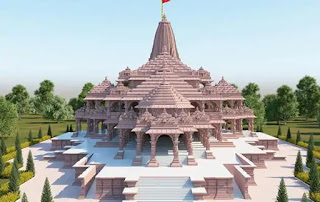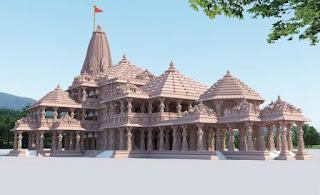AYODHYA RAM TEMPLE
""Ram Janmabhoomi" refers to the believed birthplace of Lord Rama in the city of Ayodhya, Uttar Pradesh, India. The term "Janmabhoomi" translates to "birthplace" in Sanskrit. The city has been a center of religious and historical significance due to its association with the Hindu epic, the Ramayana.
The controversy surrounding Ram Janmabhoomi primarily focused on the disputed site where a mosque, known as the Babri Masjid, was constructed in the 16th century during the Mughal era. Hindus believe that the mosque was built on the exact spot where Lord Rama was born, leading to longstanding tensions and legal disputes.
The dispute reached a climax in 1992 when the Babri Masjid was demolished by a large crowd of Hindu activists. This event escalated religious and communal tensions in India. Subsequently, legal battles ensued over the ownership of the site.
In November 2019, the Supreme Court of India delivered a landmark judgment, settling the dispute. The court granted permission for the construction of a Hindu temple at the Ram Janmabhoomi site and allocated an alternative piece of land for the construction of a mosque. This decision aimed to bring a resolution to the longstanding issue and promote communal harmony.
The construction of the Ram Mandir (Ram Temple) at the Ram Janmabhoomi site in Ayodhya began in August 2020, following the Supreme Court verdict. The temple is envisioned to be a grand structure that reflects traditional Indian temple architecture and serves as a symbol of cultural and religious identity for Hindus.
Ram Mandir inauguration Date 22 Jan 2024, Indian Prime Minister Narendra Modi has inaugurated a grand temple to Hindu god Ram in the flashpoint city of Ayodhya.
He said it heralded "a new era" for India - the temple replaces a 16th-Century mosque torn down by Hindu mobs in 1992, sparking riots in which nearly 2,000 people died.
Top film stars and cricketers were among guests at the event in Ayodhya.
But some Hindu seers and most of the opposition boycotted it, saying Mr Modi was using it for political gain.
General elections are due in India in the next few months and Mr Modi's political rivals say the governing Bharatiya Janata Party (BJP) will be seeking votes in the temple's name in a country where 80% of the population is Hindu.
Televised live, it showed Mr Modi performing religious rituals inside the temple's sanctum along with priests and Mohan Bhagwat, head of the Rashtriya Swayamsevak Sangh (RSS) - the ideological fountainhead of Hindu nationalist parties.
"Today's date will go down in history," Mr Modi said after the event. "After years of struggle and countless sacrifices, Lord Ram has arrived [home]. I want to congratulate every citizen of the country on this historic occasion."
Who designed Ayodhya temple ?
architect Chandrakant B Sompura
It was designed by celebrated architect Chandrakant B Sompura, with the help of his son Ashish, and incorporated his vision, which he outlined 30 years back. Standing on 2.7 acres of land in the temple town, the temple is 161 feet tall, 235 feet wide, and has a total length of 360 feet.
The temple has been constructed at a cost of $217m, funded from private donations. Only the ground floor was opened - the rest is expected to be completed by the end of the year. The construction work is part of a revamp for the city, estimated to cost more than $3bn.
The building of the Ram temple in Ayodhya fulfils a decades-long Hindu nationalist pledge. Many Hindus believe the Babri mosque was built by Muslim invaders on the ruins of a temple where the Hindu god was born.
The movement to build the temple helped propel the BJP into political prominence in the 1990s.
There was a festive atmosphere as tens of thousands of chanting Hindu devotees waved flags and beat drums - military helicopters showered flower petals on the temple. Saffron flags with pictures of Lord Ram line streets in the city festooned with marigolds, as do banners with the faces of Mr Modi and Uttar Pradesh Chief Minister Yogi Adityanath.
Some of India's biggest celebrities, including Bollywood star Amitabh Bachchan and cricketer Sachin Tendulkar, attended.
Ram Mandir Ayodhya Timing :
Morning Hours (Summer & Winter): 07:00 am – 11:00 am
Evening Hours (Summer & Winter): 02:00 pm – 06:00 pm
Ram Mandir Ayodhya Location :
The Ram Mandir in Ayodhya is found in the city of Ayodhya, Uttar Pradesh, India. It’s located at the Ram Janmabhoomi, believed to be where Lord Rama was born. If you’re planning to visit, you can get the exact location details from local authorities or use navigation services. The temple is near the river Sarayu, adding to the scenic surroundings.





0 Comments